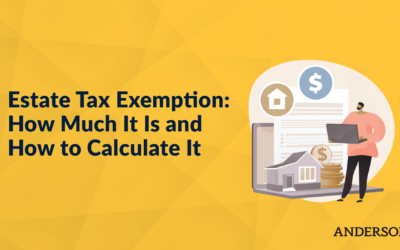Updated February 16, 2021
To many people, the long-term planning of an estate begins when they realize that there are assets they want to pass on to others. When most people first think about estate planning, a will and testament may come to mind, however, this is archaic thinking. There is so much that the legal system provides to ensure our assets and property continue to benefit our friends and families throughout generations. Setting up a plan now can reduce anxiety about the future of your family and mitigate the tremendous effects that a sudden death or failing health of an individual can have on a family and community.
So What Is The Best Way To Establish An Estate Plan?
- Assess your assets and strategize
- Establish the Trusts needed based on your strategy
- Last will and testament
- Assign Power Of Attorney
- Personal Property Memorandum
- Statement of Desires
An estate plan is rigid upon your death, but it is malleable while you are alive. You can always change the plan. So if your life and assets change, your plan can change. Starting a plan early will allow you to become familiar with your options so that you can continue to change your estate plan as your family grows and matures. The best plan you can create will ultimately relieve stress for you and your family, allow for clear communication, and leave space for people to process a changing family dynamic as one generation transitions to the next.
Assess your assets and strategize
As a general framework, it is important to think about and clarify what forms of property and what assets you have acquired and the impact they will have upon your beneficiaries. Another suggestion before beginning to investigate your planning is to think about what strategy you will take in creating your estate plan. You can start by planning how you will protect, manage, and transfer your largest assets first, thereby managing the largest pockets of wealth first and making sure that these assets will benefit your heirs. You will also need to determine how and when you will want your assets distributed and to whom. By starting from the top down, you are completing the process of accessing your assets from the most important to the items of lesser importance.
Establish the Trusts needed based on your estate plan strategy
Living Trusts are the best way to be sure your estate and assets will transfer effectively and the way you see fit while avoiding the high cost and lengthy time associated with probate. A trust is simply an agreement in which a designated trustee holds onto assets or wealth for the intended beneficiary. Trusts can hold many different types of assets, including titles, money, stock, real estate, and also business interests. Since the trust holds and owns all of your assets there is no need for probate when you die. As the name suggests, the trust lives on even after you pass!
Living trusts are very flexible and the detail with which you choose to leave instructions can be thorough and unique. Each family is different and a living trust is a great tool to use to plan for each beneficiary in accordance with your wishes. For example, living trusts can protect the beneficiaries from themselves. If a beneficiary has problems with substance abuse or managing money, the trust can take this into account and have provisions that enable the beneficiary to get assistance and care. Trusts can also be a useful tool to protect children and ensure they have the motivation to achieve their own goals. For instance, a trust can designate that a child is to receive periodic distributions over time, as opposed to all of the assets all at once when they turn eighteen.
A final Will is part of your estate planning strategy
A will can provide for many different things you wish to see happen after passing. It is a flexible and all-encompassing document, generally hitting on several main points: naming an executor (also known as a personal representative), what happens to any assets left outside the living trust, and who will care for your children. A major downside to a will is that the will needs to be probated so we never use a will by itself. A will simply serves as a backup to a living trust. Probate is a very expensive and time consuming process that eats away from the estate and highly enriches attorneys. A living will is slightly different and is used to articulate how you wish to be cared for if you are severely compromised medically. For instance, you may request not to be hooked up to feeding tubes and breathing machines.
Establishing a Power of Attorney is a critical part of your estate planning strategy
Appointing the power of attorney to another is typically done so that if you lose executive functioning or become incapacitated an individual can step in and handle your affairs. There are a few types of power of attorneys and you may decide you want to designate several people in your life to hold different roles. A power of attorney is the power represented by documentation for a person to take legal responsibility for some part of your life. A “principal” is the individual who is granting power of attorney to another. So, if you designate power of attorney to your wife, then you will be the principal and she will hold power of attorney.
Most commonly, financial power of attorney grants an individual the power to make financial decisions on your behalf. You can have someone designated with this power immediately, in which case they can begin making decisions for you or with you as soon as they are appointed.
Alternatively, you may decide who will take on the power of attorney in the case of significant incapacitating illness. This designation is generally referred to as a “springing power of attorney” because this person will suddenly spring into the role if the principal is ever mentally and physically compromised.
Another form of power of attorney is a medical power of attorney. An individual designated with this power will be able to make medical decisions on behalf of the principal if he or she is compromised and unable to make these decisions for him or herself. Having a medical power of attorney will ensure that your wishes are met and that the burden of these decisions does not place undo stress on your family.
Make certain you have a Personal Property Memorandum
A personal property memorandum or specific gifts memorandum designates the persons to whom you want to leave items such as family heirlooms, knick-knacks, and personal mementos. This is one of the most important documents in the estate plan because a majority of the family arguments center upon these items. Grieving and greed go together. This document allows you to leave certain personal items that may have sentimental value to those who would truly appreciate items.
Finally, be certain to have a Statement of Desires
Regardless of how many pieces of planning you have put together, having a statement of desires is a very good idea. A statement of desires acts as the catchall for the details of your life that may not be included in your trust or other instructions. While a statement of desires is not legally binding, it can actually do a lot to manage some of the confusion after a death in the family.
A statement of desires can include logistics like where assets are located and how to access them. It’s a great place to document user names and passwords and other directions. It can also be a place to designate what you wish will happen with other less important items or help clarify any other loose ends.
In Conclusion
Remember that ultimately a useful estate plan will mitigate the stress on your family and be clear and easy to understand and access. A complete estate plan does not just use a will, but many other documents all centering around the living trust. The overarching goal of estate planning is protect the beneficiaries from themselves and others and to keep the family relationships intact.
If you would like assistance in developing the best estate plan for your unique assets and financial situation, as well as your wishes for your family, contact our team of advisors today for a consultation.
As always, take advantage of our free educational content. Every other Tuesday we have Toby’s Tax Tuesday, another great educational series. Our Structure Implementation Series answers your questions about how to structure your business entities to protect you and your assets. For investing we offer our Infinity Investing Workshop.
Free Strategy Session with an Anderson Advisor
Receive a detailed risk assessment to assist in lowering problem areas that could wipe out all of your assets with one wrong move. Speak with an Anderson Professional Advisor to get your FREE Strategy Session.
Limited-Time Offer: ($750 value.)














